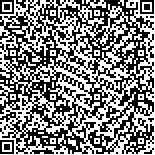王永慧,孟菲,丁欣利,范真真,王超,岳寿伟.大鼠肌紧张带重复低频电刺激后的生物力学及病理学改变[J].中华物理医学与康复杂志,2015,37(7):493-497
扫码阅读全文

|
| 大鼠肌紧张带重复低频电刺激后的生物力学及病理学改变 |
|
| |
| DOI: |
| 中文关键词: 肌筋膜疼痛综合征 肌紧张带 易疲劳性 |
| 英文关键词: Myofascial pain Taut bands Fatigability Muscles Electical stimulation |
| 基金项目:国家自然基金资助项目(81000855,81272155);山东省自然基金资助项目(ZR2010HQ021) |
|
| 摘要点击次数: 2282 |
| 全文下载次数: 2837 |
| 中文摘要: |
| 目的研究大鼠肌紧张带(TB)重复低频电刺激疲劳试验后的生物力学及病理学改变。 方法符合实验标准的28只Wistar大鼠,按随机数字表法分为对照组、强度疲劳实验组和频率疲劳实验组,分别进行对照、强度疲劳实验和频率疲劳实验研究。记录和分析TB和非肌紧张带(non-TB)在每一刺激循环中的最大收缩力和最大收缩力低刺激强度和高刺激强度,以及频率疲劳实验中的最大收缩力、强直收缩力和频率。光镜下观察其病理变化。 结果①强度疲劳实验中,TB的最大收缩力在第15次循环(1.42±0.28)g和第20次循环(0.93±0.54)g中明显比其第1次循环(1.99±0.31)g和第5次循环(1.97±0.27)g降低;最大收缩力高刺激强度在第15次循环(3.76±0.71)V和第20次循环(3.44±0.97)V中明显比其第1次循环(4.04±0.64)V降低。在第10、15和20次强度刺激循环中,TB的最大收缩力和最大收缩力高刺激强度明显比non-TB低。②频率疲劳实验中,TB最大收缩力频率(9.60±2.12)Hz和强直频率(25.45±2.65)Hz明显小于non-TB,最大收缩力(1.67±0.16)g和强直收缩力(2.02±0.21)g明显大于non-TB。③病理切片显微镜观察显示强度和频率疲劳实验后,TB肌纤维染色明显不均,肌纤维排列紊乱,出现明显的水肿、细胞退变和断裂。 结论TB耐受不同电刺激强度和频率的能力降低,肌纤维易受损伤,肌肉抗疲劳能力下降;TB或许参与肌筋膜疼痛综合征患者的肌无力和易疲劳性。 |
| 英文摘要: |
| Objective To investigate the biomechanical and pathological changes in vivo in the taut bands (TB) of biceps femoris in rats after repeated low-frequency electrical stimulation. MethodsTwenty-eight Wistar rats were randomly divided into a control group, an electrical intensity-dependent fatigue group, which were subject to electric intensity-dependent fatigue test, and an electrical frequency-dependent fatigue group, which were subject to electrical frequency-dependent fatigue test. After fatigue tests, the taut band of the biceps femoris and the non-taut band of the contralateral biceps femoris were harvested for pathological observation. The maximum contraction force (MCF), electrical intensity- and frequency-dependent fatigue characteristics and any pathological changes in the TBs were assessed and compared to the non-taut band region of the other biceps femoris. ResultsThe MCF at the 15th and 20th stimulation (1.42±0.28 g and 0.93±0.54 g respectively) were significantly lower than that at the 1st and 5th stimulation of the TBs. High stimulation intensity (HSI) at the 15th and 20th stimulation (3.76±0.71 V and 3.44±0.97 V) were also significantly lower than at the 1st TB stimulation. At the 10th, 15th and 20th stimulation of the TBs, MCF and HSI were both significantly lower than in the bands which were not tight. In the frequency-dependent fatigue stimulation tests, the frequency which generated the MCF of the TBs was significantly lower than in the bands which were not tight, while the MCF of the TBs was significantly higher than that of non-TBs. After either intensity or frequency fatigue testing, more severe edema, uneven cytoplasmic death and degeneration of muscle fibers were observed in sections from TBs than from the bands which were not tight. ConclusionsTaut muscle bands are significantly less fatigue-resistant than normal muscle fibers. Taut bands may contribute to the fatigue of myofascial pain syndromes. |
|
查看全文
查看/发表评论 下载PDF阅读器 |
| 关闭 |